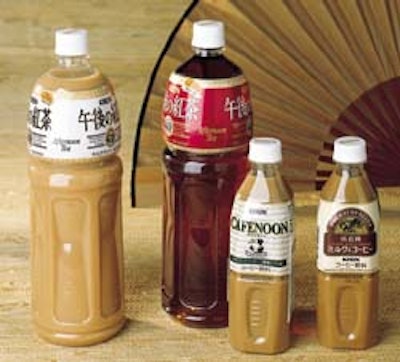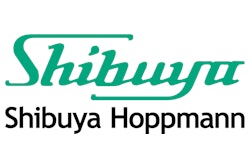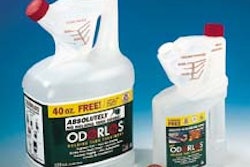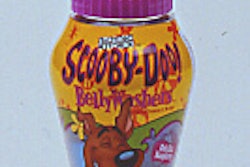
Aseptic filling of teas, milk teas and milk coffees into polyethylene terephthalate bottles takes an unusual twist at Nihon Canpack Co., Ltd., one of Japan’s largest beverage bottlers. Its process is unusual in that a machine inserts a temporary plug into the mouth of each bottle right after the sterilant, hydrogen peroxide mist, is sprayed inside.
Bottles then go through a first-in/first-out accumulator that heats them to 45° to 50°C (122°F). This allows the hydrogen peroxide to fully sterilize the interior of the bottle and then decompose. Nihon Canpak, which installed two of these cold-fill aseptic systems in 1997, is plenty convinced about the sterilizing process.
“We have produced in excess of 600ꯠꯠ aseptically filled 500-mL bottles on the two filling lines installed at the Akagi plant,” says Katsuo Takamura of Nihon Canpack. “To the present date, no spoiled bottle has ever been reported from either the marketplace or from the incubated samples taken from the line.”
Equally confident is Kirin Beverage Corp., one of Nihon Canpack’s major customers.
“We selected Nihon Canpack as our co-packer because they had the capacity on this system, which we believe to be superior to any other system available,” says a senior Kirin spokesman. “We have proven its microbiological reliability ourselves.”
Two misting stations
Developed jointly by Shibuya Kogyo and Dai Nippon Printing, both of Japan, this method of sterilizing is claimed by Shibuya Intl. (Modesto, CA) to be extraordinarily effective. Bottles reach the sterilizing chamber by way of an air conveyor from NTS (Fayetteville, GA). In an enclosed area, bottles pass between two misting stations that direct hydrogen peroxide into and around the mouth of the bottle. Then a temporary plug is inserted into each bottle mouth to seal the bottle interior from the external atmosphere.
The plugging machine consists of a rotary turret onto which bottles are fed and held by the neck and body. The polyethylene plugs are fed from an orienting sorter to the plugging heads mounted around the circumference of the plugger turret. The plugger heads lower under cam action to insert the plugs. An air conveyor transfers the plugged bottles to the heated accumulator.
Ten minutes later, the internally sterilized bottles leave the heated accumulator and are air- conveyed into what might be called an “antechamber” of the true aseptic section. This antechamber is an enclosed air conveyor in which the exterior surfaces of the bottle are sprayed with a mist of hydrogen peroxide from a series of spray heads that completely coat the bottle exteriors. This chamber also forms the barrier between the upstream equipment and the downstream aseptic filling and closing system.
Before leaving this antechamber, bottles are air-conveyed through a section where the conveying air and the chamber air are heated to 50°C (122°F). Here the bottle exterior is sterilized and dried as the bottle moves to the fully aseptic chamber, which has a Class 0 sterility level. Glove ports allow operators to perform troubleshooting inside this chamber without having to breach asepsis.
The first station in the aseptic chamber is deplugging. At the infeed to the rotary deplugger, bottles are transferred from the air conveyor to a tabletop chain conveyor that leads to a starwheel infeed to the deplugger turret. As a bottle is transferred, a top-plate holds the neck of the bottle, and a plug gripper lifts by cam action to remove the plug from the bottle. The plugs are transferred to a hopper and conveyed from the aseptic chamber for reuse. Bottles are then transferred by conveyor and feedscrew to a Shibuya net-weigh filler.
Caps sprayed, too
The nonsterilized caps are fed from a hopper to a cap orienter that’s outside the enclosed aseptic chamber. Oriented caps are fed single file into pockets of a series of wheels. Each wheel hands the cap over to the next wheel in the series, and during the exchange both inner and outer surfaces of the cap are sprayed with a mist of hydrogen peroxide. In the final stages, the caps are heated to 115°C (239°F) by hot sterile air to activate the sterilizing effect of the peroxide and to dry the caps before transferring them into the aseptic chamber.
The sterilized caps are fed to the picker disc by an inclined cap chute. Sterilized caps are fed to an accumulator from which they are fed to a cap chute that carries them down to the capper. Filled bottles are transferred onto the servo-driven screw capper turret by a transfer wheel. Caps are picked from the chute by a picker wheel mounted above and applied to containers. Capping torque can be adjusted during production by entering the required torque on the capper’s human/machine interface panel.
Filled and capped bottles are discharged from the aseptic chamber by a conveyor running through a sterilant bath. This keeps any contamination from entering the aseptic chamber environment. Also, the entire aseptic chamber—exterior surfaces of all equipment, interior surface of the chamber itself, and all sterile air filters and pipes—is automatically cleaned and sterilized without human intervention. The frequency of this CIP/SIP process is determined by each individual customer.
According to Kirin’s spokesman, the length of time during which microbiologically safe production can continue uninterrupted is extremely important. “We are currently running the line for 100 consecutive hours as the longest production period,” he says. “But we are considering extending that period to one week.”

























